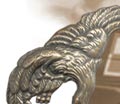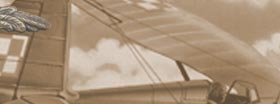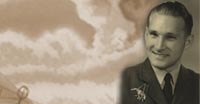Poland Alone: Britain, SOE and the Collapse of the Polish Resistance, 1944
By Jonathan Walker, Stroud. The History Press Ltd.
ISBN 978 1 86227 474 7
Poland Alone marks a ‘watershed’ in recent publications on Poland where Jonathan Walker has joined the ‘lone voices’ of notable authors like Josef Garlinski, Norman Davies and Adam Zamoyski in re-affirming the vital role and subsequent suffering the country succumbed as the war drew to a close. Jonathan Walker’s book joins a number of recent publications on Poland where detailed research and interviews across Europe has produced a notable addition in the support of Britain’s first ally. Walkers’ extensive research in archives in Britain, Poland and Germany infused with excerpts of interviews neatly contextualises key moments in Poland’s struggle. Walker suggests Poland was a ‘tripwire’ that brought Britain into the Second World War. While this point may be largely supported by historians, the Poles had an ‘Ace up their sleeve’ in their ability to read German cypher traffic at a time when British intelligence services were ‘blind’, particularly the navy and Britain had few other options. It was the lack of naval intelligence and the deciphering of German coded traffic through Enigma that was the ‘final bait’ – not a tripwire.
The opening chapter on the invasion of Poland takes a different tack to the work by David G. Williamson’s book ‘Poland Betrayed’. Jonathan Walker produces an overview packed with detail indicating the complexity of Polish political and military structures of the government in exile and how internal alliances overshadowed the effectiveness of government. The seizure of Teschen may have angered Churchill in 1938, but by the time the Polish troops had arrived in Britain after the fall of France, much had been forgiven even though the appointment of General Sosnkowski as Commander-in-Chief was not well received in many British political circles, never mind Stalin.
Chapter Two and Three covers the Polish ‘Home Army’ and the multitude of politico-military organizations that eventually emerged as the Armia Krajowa. Many young men like my father had become members of these organizations (notably the ZWZ or Zwiazek Walki Zbrojnej) just prior to the collapse of Poland to continue an armed struggle through intelligence gathering, sabotage and propaganda to a high degree of sophistication and organization with details still emerging today. After centuries of occupation, resistance and conspiracy were ingrained in the Polish culture. The extreme right (NSZ) and the communists were barred. In an occupied state the degree of oppression and attempt to eradicate Poland’s culture enabled an underground state covering all forms of political, military and social departments to exist ‘under the noses’ of the Reich and Volksdeutsche - not seen in any of the other occupied countries during WWII. Sabotage, intelligence gathering and regular flow of couriers out of Poland enabled an effective underground army to function where creativity and nerve kept valuable Wehrmacht units away from the frontlines, which included ‘black propaganda’ (Action “N”) by producing underground newspapers purporting to be dissatisfied Germans. The chapter is dotted throughout with details of operations and the ‘air-bridge’ or Mosty for the supply of arms, medical equipment and personnel especially the Cichociemni or Special Forces who became a role model for future SF training and operations. The extent of these operations included the Slovak rising in ’44 and other operations in Hungary. Operation Wildhorn and the shipment of V2 rocket parts is a testament to the courage and daring of all those involved in these operations when facing great logistical odds where Jonathan Walker has successfully contextualised the importance of these operations.
Chapter Four covers Auschwitz and the vast network of camps in Poland ranging from detention camps for POWs through to the penal, concentration and extermination camps. Much has been written and debated about the ‘Final Solution’ including Josef Garlinski seminal work “Fighting Auschwitz”. Walker has attempted to reaffirm the known appalling circumstances that allowed the Nazis murder 90% of the Polish Jewry. Through the use of personal accounts of those within the ‘system’ including POWs first hand experiences and survivors memoires, Walker has attempted to show moments of humanity briefly existed within such horror. The chapter has been handled with candour and sensitivity. However, as the Soviet forces swept through Poland, there was sufficient evidence and newspaper reporting to support earlier reports from the AK and The Jewish Chronicle from 1942 onwards of the mass genocide. Indeed, in December 1942 through to January 1943 reprisal bombings were discussed in retaliation to ‘ethnic clearing’ in Poland. Jan Nowak (Courier From Warsaw) complained of BBC ‘censorship’ in regards to news from Poland and the fate of the Jews. Jonathan Walker concluded that the muted British response to the discovery of The Holocaust and also the Jewish diaspora living in the West was due to the scale of the genocide being just so unimaginable that a ‘blind spot’ emerged in the British psyche in post-war Britain.
Chapter five covers the SOE in Poland and probably one of the most challenging operations to supply and equip troops both in Poland and also France (POWN) – an operation almost forgotten, but was at one stage almost as large as the French Resistance. The AK operated independently and resisted being influenced by British or US interference and relied on keen supporters like Major-General Gubbins to ‘grab’ anything that could be spared to keep ‘air-bridges’ supplying the AK. The death of Sikorski caused untold damage to the political positioning of the Poles and its relations with London, a relationship that never recovered resulting in the Poles being side-tracked as the invasion of Europe took precedence. The SOE operations out of Italy from Brindisi to supply the AK was probably only 10% of what had been promised and yet, these activities to support the underground army kept needed combat divisions tied up in anti-partisan actions. The chapter covers a number of operations in a tight and concise manner with personal testimonies that will never fully reveal the ground conditions inside Poland. Despite the political tangles between the government-in exile and London, the AK began preparations for the Warsaw ‘Rising and the political defiance of Stalin’s plans for Central Europe.
Chapter Six opens with the Soviet army pushing towards the former Polish borders by engaging the German army in five planned offensives. It also escalated the discussions over Poland’s post war borders or the ‘Curzon Line’ and Stalin’s subjugation of central Europe and the Allies betrayal of Poland. Churchill became increasing isolated in his views and his support waned as the Imperial War Cabinet lost interest. The Foreign Office increasingly pushed for control and insight into Polish operations and cypher traffic, which was refused. The ‘Sovietization’ of central and Eastern Europe was seen as somewhere between unstoppable or acceptable for the sakes of ‘goodwill’ towards Stalin that with hindsight seems totally flawed in judgement and strategic thinking. It was not until the unmasking of ‘Cambridge Five’ during the Cold War that the full impact upon Polish relations revealed.
As the Soviet Army pushed through eastern Poland, local populace were ‘recruited’ to replace lost troops and the AK were in most cases despatched with the NKVD operating behind forward areas searching out any AK or ‘undesirable’ elements. While the ground war continued on a massive scale, the Polish political parties relied less and less upon Anglo-US support for an independent Poland where even the assurances by Roosevelt became hollow. Premier Mikołajczyk became increasingly marginalised and the Katyn massacre too difficult a topic to even mention. Again, Walker has demonstrated the deft handling of both military and political detail to enliven a complex political and military map.
Chapter Seven and Eight covers the Warsaw ‘Rising which today Varsovians pay tribute to the fallen on 1st August for one minute where everything stands still. Walker has chronicled the events in detail interweaving the political wrangling between the Poles, the Allies and the emerging puppet communist government under the leadership of Bierut with the brutality of the fight. The ‘Rising had long been planned and was implemented through desperate need to demonstrate an independent Poland would prevail despite the Soviet goals. The critical element of air-support lacked accurate logistical analysis since the distance and payload versus casualty rate was probably a poor guestimate. SOE were not fully included in the planning and this exclusion cost the Poles dearly as it meant any spare aircraft were diverted to higher priority missions in other theatres of war. Even the Polish Parachute Brigade had been sequestered to the ill-fated Market Garden operation. As the city was reduced to rubble, the vicious German counter attack and insurgency operations were hardly acknowledged by the Soviets as they held onto their bridgehead at Magnuszew with Berling’s Polish Army encamped there. Walker has carefully used eyewitness accounts and testimonies to underline the heroism and suffering of the civilian populous and has captured the despair and frustration of the civilian populous, the AK and the Polish combatants fighting in other theatres of the war – far from ‘home’.
Chapter Nine recounts the collapse and chaotic retreat East by the German Army. In it’s wake, the AK and units led by the Cichociemni attempted to liberate towns and key positions before Soviet occupation, however, the speed of advance took local commanders by surprise with the NKVD forcing AK units into the Soviet army to assist in first wave assaults or in many cases summary execution with the Cichociemni particularly singled out. While clandestine flights into Poland continued, operations increasingly became difficult through the winter of 1944 the political shift through the allies accepting settlement with the Soviets over the ‘Curzon Line’ created mayhem within the government in exile. The betrayal seemed less significant to the British as the loyalty of the Poles was never in doubt. High risk operations continued with Wildhorn IV brought out V2 rocket secrets or the planning of other operations to liberate Poles in labour camps (Operation Dunstaple) or liberation of P.O.W’s (Operation Flamstead/ Fareham) continued while the ill-fated Operation Freston underlined the realpolitik of an ineffectual power of Britain in shaping post war Europe. With Operation Freston floundering in its mission, the NKVD marginalised AK activity in ‘liberated’ areas and according to Jonathan Walker some 80,000 agents were active in Poland in the latter stages of the war alongside advisors who permeated into all areas of Polish life. This did not stop the rape and plundering and the Soviets had little interest in re-starting industry since all machinery had been stripped and shipped east. On 19th January 1945 General Okulicki ordered the dissolution of the Home Army and by the following summer Poland was ‘alone’.
Jonathan Walker’s account is wrapped up in the final epilogue and conclusion surrounding Poland’s submersion into Soviet control and the failure of resistance movements like WiN in the immediate post-war period. Certainly some sanctuary came through the Polish Resettlement Corps for those combatants left in the West, but it also left divided families for many decades to come. There is no mention of the Polish civil war that leaves the chapter slightly unfinished and its context being important in Poland’s current relationships with some of its near neighbours. Walker’s epilogue follows up on some key figures that were instrumental in the war and although the list is not exhaustive, it unfortunately leaves out figures like General Maczek or Major General Sosabowski who made significant contributions to the Polish armed services. The book is well researched and written in a ‘crisp style’ packing in much information and analysis. The personal accounts adds context and emotions to a turbulent period of Poland’s history.
Julian Hoseason, editor polandinexile.com





